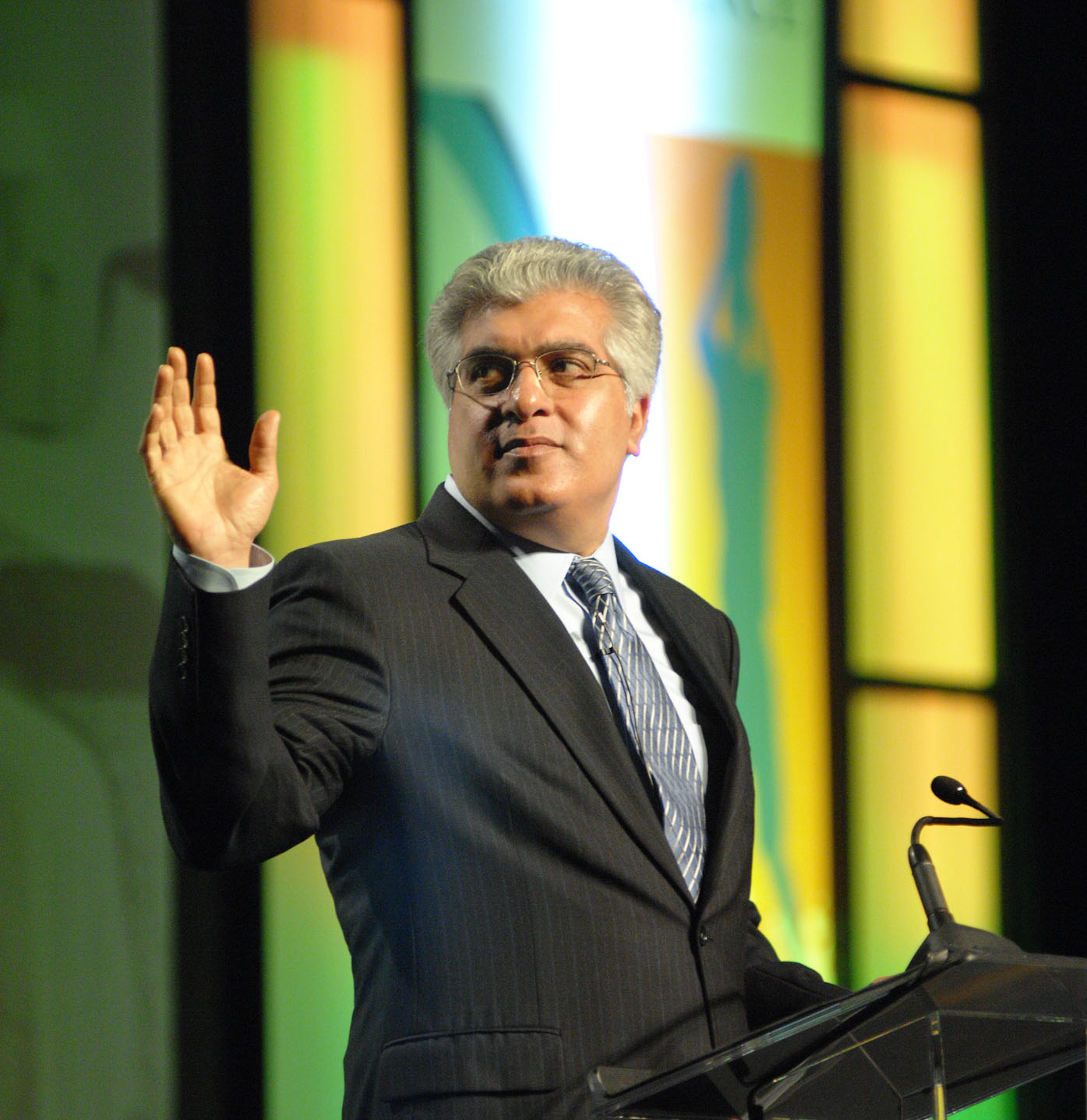
Forecaster Says Virus Variant Will Delay but Not Diminish Economic Growth Prospects
![]()
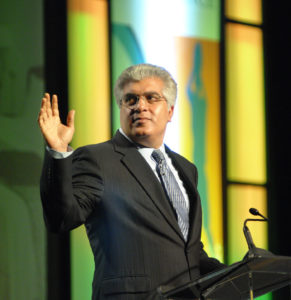 Forecaster Says Virus Variant Will Delay but Not Diminish Economic Growth Prospects
Forecaster Says Virus Variant Will Delay but Not Diminish Economic Growth Prospects
ATLANTA-The impact of COVID-19’s delta variant will delay but not diminish growth prospects, and a current surge in inflation will recede in 2022, according to Rajeev Dhawan of the Economic Forecasting Center at Georgia State University’s J. Mack Robinson College of Business.
“The pause in growth is due to a decrease in consumption of contact-heavy service-sector products, such as hospitality, travel and elective healthcare because of the current surge in coronavirus illnesses and hospitalizations,” Dhawan said. “Once public health measures arrest the surge, consumer sentiment will improve, the service sector will reignite and growth will resume.”
The forecaster posited that three temporary factors are fueling inflation: the reopening of the hospitality and retail trade sectors, idiosyncratic supply chain disruptions and “super-sized stock market gains” leading to “spectacular home price growth.”
Dhawan said, “Hotel room rates have spiked, with a 10 percent increase in each quarter of 2021, as occupancy rose sharply after a long period of inactivity. And this was mostly leisure travel (meeting friends and family and taking summer vacations), which shows up in data as a rise in the consumer price index (CPI). But this is temporary. Another round of double-digit price increases would only happen if people began taking vacations not only in the summer, but also in the fall, and then again in winter – an absurdity, as it violates social calendar norms.”
Anomalous supply chain events (accidents at chip production plants in Taiwan) roiled U.S. car sales when chip shortages reduced new vehicle inventory and led to upward pressure on used-car prices.
“This was a one-time price increase that is already leveling off,” Dhawan said.
Dhawan acknowledged the seeming paradox of falling interest rates for 10-year treasury bonds given the high fiscal deficit and rising inflation.
“Why has the 10-year bond yield fallen for the last three months after peaking at 1.6 percent in March? And does this drop signal diminished growth prospects in 2022?” Dhawan asked. “Let me start by answering the second question. Growth prospects are undiminished but will be delayed.” – more –
Dhawan attributed the drop in 10-year yields to an influx of funds triggered by the arrival of delta variant cases of COVID-19 and an uptick in geopolitical worries.
“Companies pause capital expenditures (investments) during times of uncertainty and park their money in the safest assets in the world – U.S. treasury bonds,” he said.
The forecaster asserted the flight to safety would be temporary, pointing to the widely held perception of statements by Federal Reserve Chair Jerome Powell as credible.
Dhawan’s final inflation factor is the heated residential real estate market, spurred by “dramatic” stock market performance since the lows of March 2020, which has fueled “spectacular” home price gains over the last 12 months.
“The pandemic triggered a demand shock – a change in housing taste and location preference – that has not abated during subsequent waves of the virus,” he said. “People are moving from crowded in-town areas to single-family homes farther out or farther away.”
The hot market for residential real estate will ultimately normalize, Dhawan said.
“Once everyone has moved, the demand shock will abate. Affordability depends on price and interest rates. Although the Fed will not raise rates until well into 2023 (as tapering of bond purchases won’t begin until mid-2022),” he said. “Sustained high domestic fiscal deficits and eventual global recovery will push up long-bond yields, causing mortgage rates to reach 4.0 percent by late 2022.”
Dhawan said 2021 has averaged 617,000 new jobs per month from January to July, with almost 50 percent growth in the hospitality and retail trade sectors. The corporate sector, home to premium jobs, is not producing consistent job growth.
“Corporate job growth is at 52,000 new positions per month,” Dhawan said. “That’s only 8 percent of total job growth for a sector whose share of jobs is 14 percent. Further boosts for this sector will hinge on the global economy, which still hasn’t picked up speed because of vaccine scarcity.”
Highlights from Rajeev Dhawan’s National Economic Forecast
- Gross domestic product (GDP) growth will be 5.0 percent in the third quarter of 2021, moderate to less than 3.0 percent in the subsequent two quarters before rebounding to 4.9 percent in the second quarter of 2022 and will be 4.2 percent in the third quarter of 2022.
- Overall GDP growth will be 5.7 percent in 2021, 3.9 percent in 2022 and 2.7 percent in 2023. • Housing starts will average 1.560 million in 2021, 1.433 million in 2022 and 1.363 million in 2023. Vehicle sales will average 16.3 million in 2021, 16.9 million in 2022 and 18.1 million in 2023. • CPI inflation will be 4.3 percent in 2021, moderate to 3.1 percent in 2022 and further moderate to 2.4 percent in 2023. The 10-year bond rate will average 1.4 percent in 2021, 2.1 percent in 2022 and 2.5 percent in 2023.
–
Read More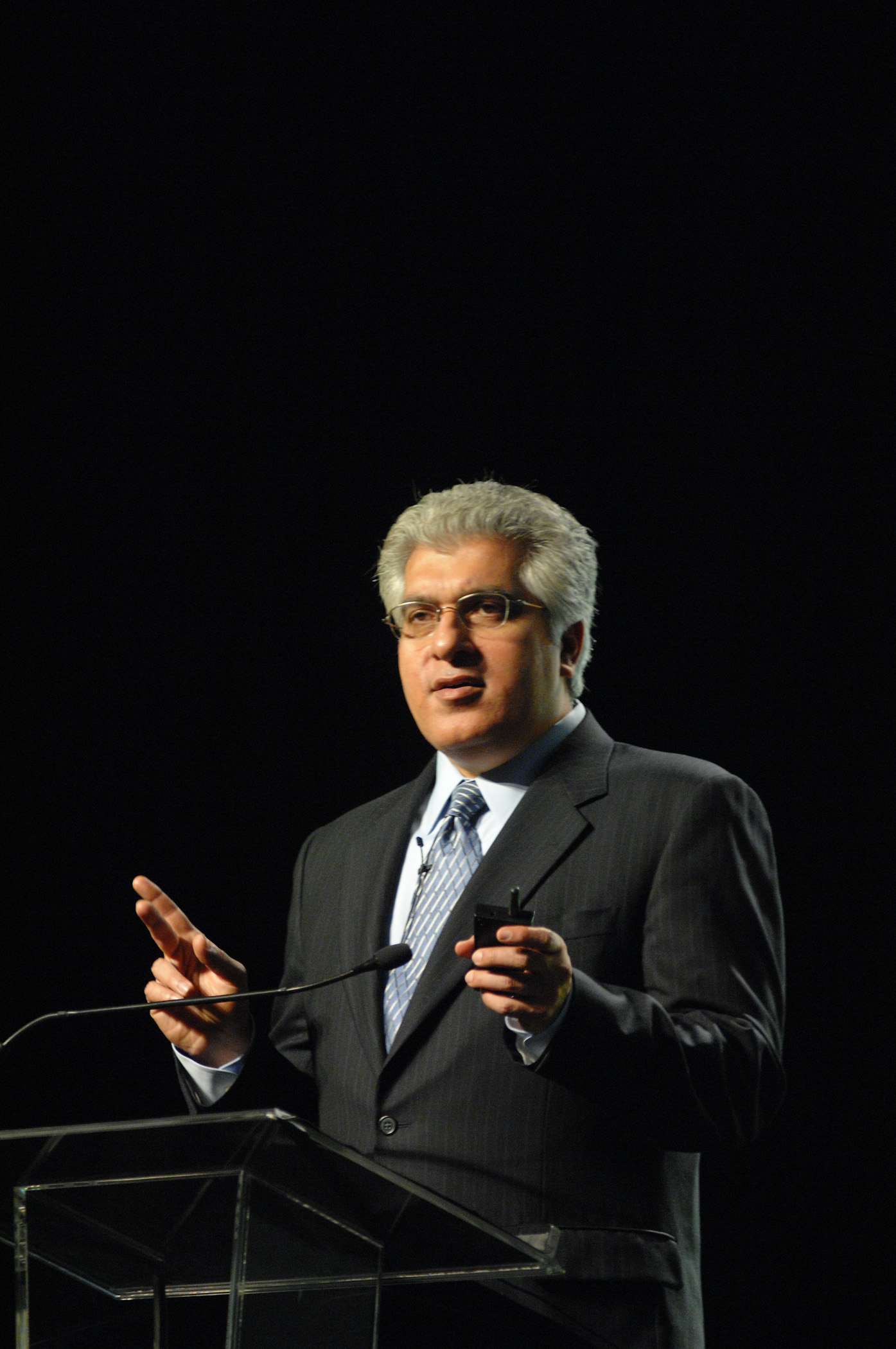
Georgia’s Recovery Outpaces U.S. But Not Immune to Global Supply Chain Disruptions
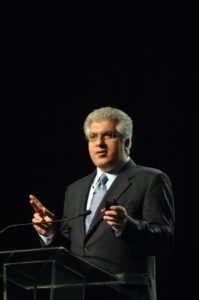 Georgia’s Recovery Outpaces U.S. But Not Immune to Global Supply Chain Disruptions
Georgia’s Recovery Outpaces U.S. But Not Immune to Global Supply Chain Disruptions
ATLANTA – Georgia’s recovery from the 2020 pandemic shutdown remains ahead of the nation’s, but further disruptions of the global supply chain could be felt from the port of Savannah to the boardrooms of Atlanta, according to Rajeev Dhawan of the Economic Forecasting Center at Georgia State University’s J. Mack Robinson College of Business.
“Although the Peach State outpaces the U.S. in economic recovery metrics, including running a lower job deficit (2 percent in Georgia vs. 4 percent nationally),” Dhawan said, “we contend with the same challenges, including inflation and uncertainty about the trajectory of the COVID-19 delta variant.”
Dhawan describes a hypothetical order of an electronics product in high demand among U.S. consumers. The product is assembled in China of components sourced from throughout the Asia-Pacific region (including perhaps Indonesia, Japan, Malaysia, South Korea, Thailand, Taiwan and Vietnam). The assembled products ship from a Chinese seaport, perhaps Shenzhen, to an American port – perhaps Savannah, the nation’s third-busiest seaport. After customs, orders ship to retailers for fulfillment.
“Under normal circumstances, the logistics process is seamless. But any interruption along the way – such as a delta variant outbreak at the assembly factory or the outbound seaport–adds to an already overwhelming backlog,” Dhawan said. “And this supply scarcity contributes to inflation and lower activity at Georgia’s signature port.”
Between continuing pandemic concerns, global supply chain snarls and geopolitical worries, Dhawan anticipates Georgia’s corporate sector will “keep pushing the pause button on hiring or making capital expenditures until uncertainty begins to subside in 2022.”
By contrast, Dhawan said, Atlanta-area residential and commercial real estate developers are pivoting to changes in market demand. “Pre-pandemic, developers were building spectacular high-rise office buildings in town and equally spectacular high-density residential towers nearby,” he said. “Today we see a shift to small, low-density office complexes in suburban locations with nearby apartment clusters. Now is not the time to gamble on building a trophy tower.”
Dhawan said one need look no further than the proliferation of 18×24-inch yellow placards lashed to roadside signs to know that active film productions have returned in force to the #1 movie-making city in America. “Georgia’s film industry is doing very well,” he said, “with plans for a symbiotic complex of studio sound stages, housing and commerce at the former General Motors plant in Doraville.”
Highlights from Rajeev Dhawan’s Economic Forecast for Atlanta and Georgia
- Georgia will add 157,500 jobs (33,200 premium jobs) in 2021, gain a respectable 109,500 jobs (30,700 premium) in 2022 and increase by 85,700 (25,500 premium) in 2023.
- Nominal personal income will grow 8.0 percent in 2021, pull back to only 0.3 percent growth in 2022 and rise 4.0 percent in 2023.
- Atlanta will add 114,100 jobs (25,300 premium positions) in 2021, grow by 70,900 jobs (22,100 premium) in 2022 and add 66,100 jobs (19,900 premium) in 2023.
- Atlanta housing permitting activity will increase by 31.1 percent in 2021, decline by 4.7 percent in 2022 and drop by 1.6 percent in 2023.
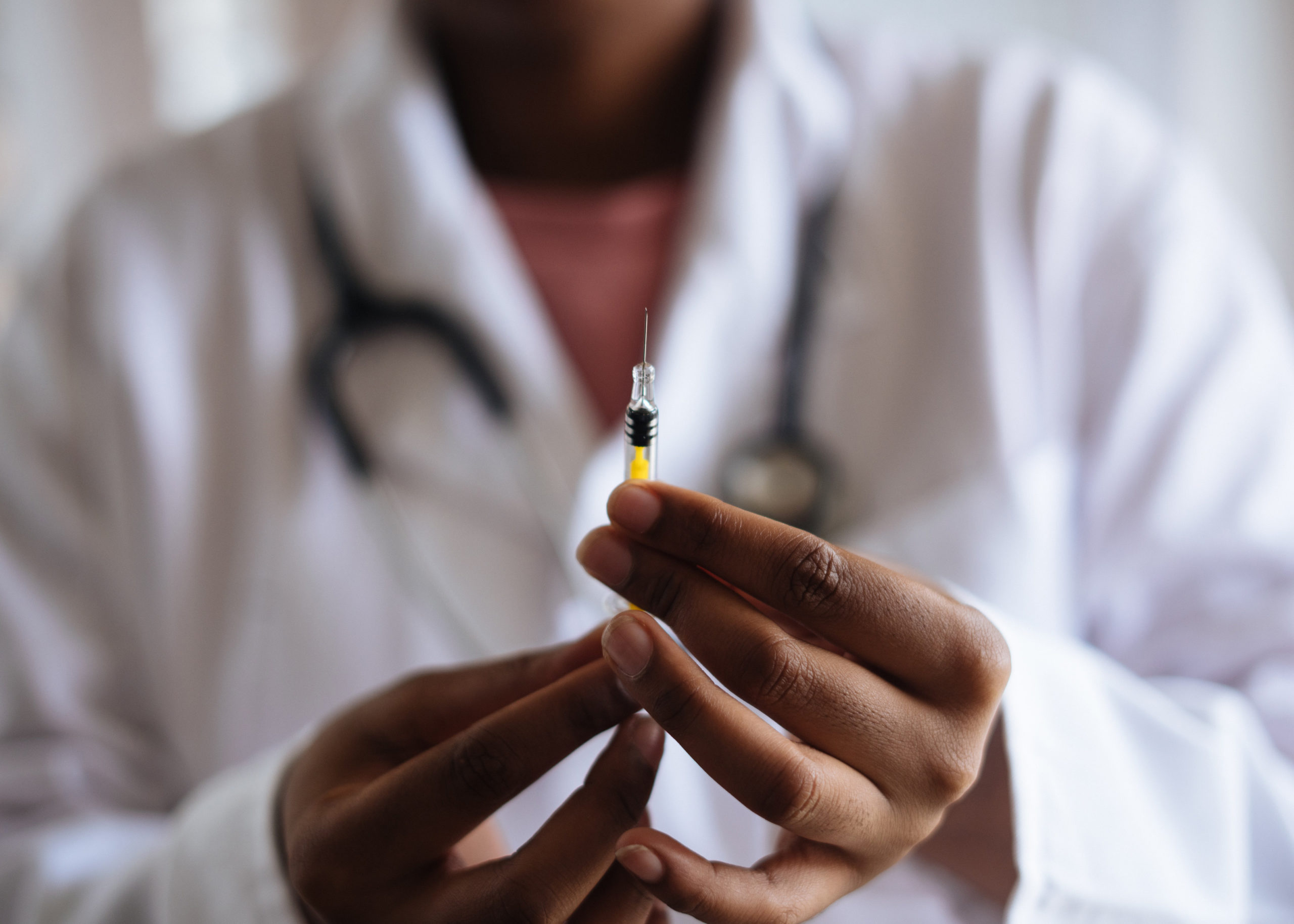
Proper Recovery Will Occur after Vaccine Dissemination, Says GSU Economist
Georgia State Forecaster Says “Proper” Recovery Will Occur Only After Full Vaccine Dissemination

Rajeev Dhawan
ATLANTA–With vaccine rollout underway and picking up steam concurrent to emerging virus variants, Rajeev Dhawan of the Economic Forecasting Center at Georgia State University’s Robinson College of Business said recovery remains “an economic tango led by the virus. Reaching a sustained recovery by early 2022 is contingent on the speed and efficacy of vaccinations by mid-2021.”
“There is light at the end of the tunnel but it will take time, with ‘proper’ benefits to come as more people are vaccinated successfully,” Dhawan said. “We must relearn to walk before we can run again. This major biological shock rattled economic foundations.”
Assessing the past impact of stimulus payments, the forecaster pointed out that consumers spent them “rationally.”
“The most vulnerable who had to spend the checks last spring and this winter did so. Others who could afford to save, banked the funds or timed purchases to smoke out retailer incentives spurred by a Covid-19 sales slump in November and December.”
Consumer spending is beginning to return, with away-from-home food purchases up 4.4 percent, and sales of used cars and trucks up 10 percent year-over-year. Also rising: sales of watches and jewelry, which dropped 50 percent during the first two months of the pandemic. Today, watch and jewelry sales are up 20 percent over this time last year.
“Who’s buying all these watches and jewelry? We don’t know. But couples who have been confined together at home and perhaps postponed weddings, may be spending money they saved on peace offerings,” said Dhawan.
Proposed federal-level spending, immaterial of amount, will boost consumer spending for only a short while, followed by an inevitable reversion to the mean in subsequent quarters as stimulus funds run out.
“Real recovery will depend on people feeling comfortable interacting with each other – eating out, attending meetings, going to movies and concerts, and sightseeing,” said Dhawan.
Georgia and Atlanta did not take as hard a job-loss hit as the nation overall when the coronavirus shut down the economy in spring 2020. U.S. employment plunged 14 percent, compared to an 11 percent drop in Georgia. The area’s recovery also has been faster than the nation’s, which Dhawan attributed to Georgia’s relatively brief shutdown compared to the rest of the nation (notably California and Northeastern states).
“Today, the U.S. economy is down six percent by the employment metric, compared to only two percent in Georgia,” Dhawan said at a Feb 25 conference. “That sounds good until one takes a closer look at the performance of the state’s catalyst sectors of well-paying jobs, which is where job growth starts and the multiplier effect fuels downstream activity.”
The forecaster explained that the crucial catalyst sectors – corporate jobs, information technology, business services, manufacturing and transportation – experienced the same sharp eight percent drop in jobs in Georgia as experienced in the U.S. And when it came to recovery, Georgia has not outpaced the nation in this critical income generating category.
“Net-net, the overall job recovery deficit may be only 20 percent. But for high paying jobs it is close to 50 percent. Quality of jobs is a metric by which recovery still lags in the state,” said Dhawan.
One area where economic forces seem to be immaterial at the moment is homebuying, with more purchasers opting to buy single family homes further out instead of high-rise condominiums in the city’s core. How long this change in preference, or demand shock, will last is unknown.
“The rocket recovery of the stock market last spring that has continued into 2021, in conjunction with sharply falling mortgage rates, has helped consumers purchase homes.”
The Federal Reserve dropped its benchmark rate to near zero in March 2020, with subsequent quantitative measures to help shore up the mortgage market, making clear it will not raise rates until recovery fully takes hold.
“The Fed will stand pat until at least until 2023 or even later. But mortgage rates will start rising this year as the long-bond yield climbs in coming quarters. This is not just due to mild inflationary conditions expected from the consumer binge due to additional fiscal stimulus,” said Dhawan.
“The reason for a rise in bond yields is classic demand and supply of investable funds when looked at from a global perspective,” Dhawan said. “As we recover, and so does the rest of the world, rising demand for capital expenditures/investment spending by corporations that is a precursor to job growth will put upward pressure on mortgage interest rates.”
“Whether or not the housing boom continues and outlasts the coronavirus crisis hinges on stock market performance, which is a random factor in this recovery story,” said Dhawan.
Highlights from Rajeev Dhawan’s Economic Forecast
Nation
- Overall GDP growth will be 4.9 percent in 2021, 3.9 percent in 2022 and 2.9 percent in 2023.
- Investment growth will be only 7.2 percent in 2021, 5.4 percent in 2022 and 6.1 percent in 2023. Monthly job gains will be 298,000 in 2021, rise to 414,000 in 2022 and moderate to 202,900 in 2023.
- Housing starts will average 1.474 million in 2021, 1.339 million in 2022 and 1.272 million in 2023. Vehicle sales will average 16.7 million in 2021, 17.0 million in 2022 and 17.4 million in 2023.
- CPI inflation will be 2.3 percent in 2021, rise to 2.6 percent in 2022, and then moderate a bit to 2.4 percent in 2023. The 10-year bond rate will average 1.6 percent in 2021, 2.2 percent in 2022 and 2.6 percent in 2023.
Georgia and Atlanta
- Georgia will add 68,900 jobs (13,200 premium jobs) in 2021, gain a better 100,000 jobs (33,700 premium) in 2022 and increase by 77,100 (19,700 premium) in 2023.
- Nominal personal income will grow 4.0 percent in 2021, moderate to 0.6 percent in 2022 and rise 4.2 percent in 2023.
- Atlanta will add 54,000 jobs (11,900 premium positions) in 2021, grow by 86,600 jobs (29,400 premium) in 2022 and a further 64,900 jobs (17,000 premium) in 2023.
- Atlanta housing permitting activity will increase by 5.8 percent in 2021, decline mildly by 0.6 percent in 2022, then rise by 3.0 percent in 2023.

“Irksome Geopolitical Concerns” Are Potential Curveballs to 2020 Economic Growth Prospects
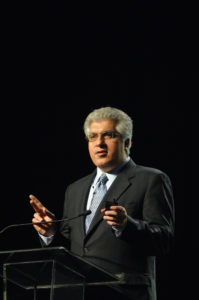 ATLANTA–Having the Federal Reserve on hold for the foreseeable future, bipartisan agreement on fiscal spending and the signed phase one tariff deal with China have reduced the uncertainty that typically bedevil growth prospects, according to Rajeev Dhawan of the Economic Forecasting Center at Georgia State University’s Robinson College of Business.
ATLANTA–Having the Federal Reserve on hold for the foreseeable future, bipartisan agreement on fiscal spending and the signed phase one tariff deal with China have reduced the uncertainty that typically bedevil growth prospects, according to Rajeev Dhawan of the Economic Forecasting Center at Georgia State University’s Robinson College of Business.
“The seeds for 2020 growth were sown last year,” Dhawan wrote in his “Forecast of the Nation,” released Feb. 26, 2020. “In early 2019, business investment was already waning (after the boost from the Dec. 2017 tax reforms) when it hit a few potholes.”
Those potholes were the shocks of a sharp drop in oil prices and the grounding of Boeing’s 737 MAX, causing a contraction in business spending by late 2019.
“The die was cast for a growth slowdown in 2020,” Dhawan said.
The typical economic pullback experienced during a presidential election year began earlier than usual this cycle when election rhetoric heated up ahead of when expected.
Dhawan posits that subpar GDP growth (1.6 percent) in the first half of 2020 will be followed by a ramped-up GDP of 2.0 percent in the year’s second half due to a “positive exigent circumstance” when the 737 MAX returns to the skies in mid-to-late summer – tempering the impact of the ongoing presidential cycle slowdown.
Potential curveballs could beset Dhawan’s baseline forecast, the most obvious being a delayed return of the 737 MAX.
The forecaster is more concerned about what he described as “irksome geopolitical concerns” – e.g., Middle East flare-ups affecting oil production and capacity, kinks in the trade deal with China, post-Brexit uncertainty in EU-UK relations, action on past threats about German auto exports, and COVID-19, the coronavirus that first appeared in late 2019 in Hubei province, China, which Dhawan said is “the biggest threat to the 2020 forecast.
“At present, the key issue for us the incidence of spread of the virus outside China, and the Chinese have taken steps to limit it,” Dhawan said. “But, unlike a finite event, such as a hurricane or earthquake, the coronavirus is still playing out, making it hard to assess economic impact.”
The biggest economic problem now, according to Dhawan, is that factory workers are stuck at home after the Chinese New Year holiday.
“China is a vital part of the world’s supply chain for goods ranging from toys to iPhones. For an economic impact to happen, this disruption would need to last awhile, say until mid-April. When inventories run out, what will Amazon sell here? What will Apple and Samsung do?” Dhawan asked. “This is what I worry about the most.”
Highlights from the Economic Forecasting Center’s National Report
- Overall GDP growth will be 1.8 percent in 2020, 2.0 percent in 2021 and 1.7 percent in 2022.
- Investment growth will be only 0.6 percent in 2020, 4.3 percent in 2021 and 3.6 percent in 2022. Monthly job gains will be 143,000 in 2020, drop to 104,200 in 2021 and a similar 94,400 in 2022.
- Housing starts will average 1.258 million in 2020, 1.224 million in 2021 and 1.234 million in 2022. Vehicle sales will average 16.3 million in 2020, and 16.0 million in 2021 and 2022.
- The 10-year bond rate will average 1.9 percent in 2020, 2.7 percent in 2021 and 3.0 percent in 2022.

Georgia State Forecaster Says Global Uncertainty Is Inducing Investment Malaise
ATLANTA–A maturing business cycle, the ongoing global slowdown, and the U.S.-China trade spat are fostering a deteriorating business investment climate, and a slowdown in job growth has made consumers wary of spending, according to Rajeev Dhawan of the Economic Forecasting Center at Georgia State University’s Robinson College of Business.
“Investments are always a risky bet. And as the amount of uncertainty rises, investment spending is the first to suffer,” Dhawan wrote in his “Forecast of the Nation,” released today (Nov. 20, 2019).
The Global Economic Policy Uncertainty Index, at its highest level since 1997, has been extremely elevated for the past 18 months. Dhawan attributes the uncertainty in no small part to the imposition of tariffs by the world’s two largest trading partners, the U.S. and China, on each other’s exports.
“Although there are other trade skirmishes [between Japan and Korea, the ongoing Brexit saga, the Catalonia secession in Spain, and even the September missile attack on Saudi oil facilities] the U.S.-China trade spat takes center stage.”
The forecaster posits that as management of U.S.-based global companies consider moving factories out of China and undoing supply chains they spent decades establishing, “their primary focus is on the vexing issue of building new supply chains and not on expanding existing business capacity, i.e. hiring.”
The fallout is readily apparent in investment growth rates. Business investment declined 3.0 percent in the third quarter of 2019, after dropping 1.0 in the previous quarter, which was a dramatic contrast to the first half of 2018, when investment grew 8.4 percent following the Tax Cuts and Jobs Act of 2017. Two other factors, or shocks, contributed to weak investment – reduced fracking investment due to falling oil prices, and the impact of the March 2019 grounding of the Boeing 737 MAX on high tech manufacturing. Looking forward, the Institute for Supply Management Manufacturing Index is below 50, signaling future contraction in the industrial sector.
As for consumer confidence, a 10-point market drop since Aug. 2019 could signal a consumption growth slowdown. The last three Federal Reserve rate cuts should have boosted consumption by lowering interest rates for car loans and on new or refinanced mortgages. However, Oct. 2019 vehicle sales of 16.5 million units were much lower than the average 17.0 million units sold the previous three months.
Damage from the last few quarters of deficient investment growth will be evident in subpar GDP growth, less than 1.5 percent on average in the coming quarters. And Dhawan characterizes business investment equipment growth as “nonexistent” until Boeing’s woes end in mid-2020.
“As growth drops well below the 1.8 percent growth potential, the Fed will be forced to cut rates several times in early 2020, most likely during the March and June meetings of the Federal Open Market Committee,” Dhawan said.
Even with these cuts, Dhawan anticipates GDP growth to drop to 2.3 percent in 2019, then decline to 1.5 percent in 2020 and improve to 1.8 percent in 2021.
“The election will be over by 2021, hopefully, and no matter who is in the White House, businesses can plan again with somewhat more certainty than at present,” Dhawan said.
Highlights from the Economic Forecasting Center’s National Report
- Overall GDP growth will be 2.3 percent in 2019, 1.5 percent in 2020 and 1.8 percent in 2021.
- Investment growth will be 2.2 percent in 2019, 0.3 percent in 2020 and 2.5 percent in 2021. Monthly job gains will be 165,300 in 2019, drop to 90,600 in 2020 and rise to 94,700 in 2021.
- Housing starts will average 1.256 million in 2019, 1.215 million in 2020 and 1.220 million in 2021. Vehicle sales will average 16.9 million in 2019, 15.8 million in 2020 and 15.5 million in 2021.
- The 10-year bond rate will average 2.1 percent in 2019 and 2020, then rise to 2.7 percent in 2021.
